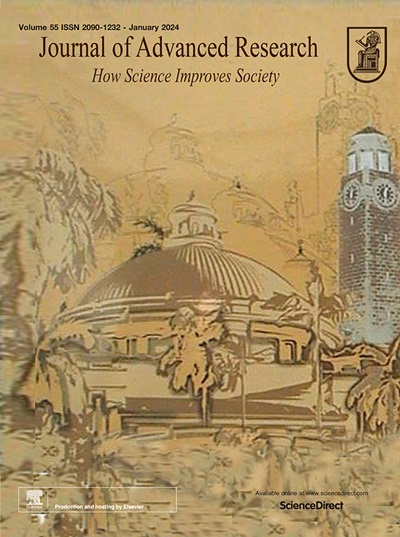通过铱(III)络合物共轭来调整顺苯乙醇酸的活性,从而开发出一种法尼类固醇 X 受体探针
IF 13
1区 综合性期刊
Q1 MULTIDISCIPLINARY SCIENCES
引用次数: 0
摘要
导言法尼类固醇 X 受体(FXR)是肠道中维持胆汁酸平衡的重要调节因子。抑制肠道 FXR 可减少胆汁酸积聚,从而有望控制炎症性肠病和肝病。此外,FXR 表达的变化可作为肠道疾病的潜在生物标志物。因此,开发 FXR 的成像探针在早期检测、同步治疗和监测 FXR 相关疾病方面具有巨大潜力。研究旨在通过将 FXR 激动剂顺苯乙醇酸(OCA)与铱(III)复合物共轭,开发一种 FXR 的生物成像探针,并研究其在肠道细胞中靶向 FXR 的应用。利用各种生化和细胞检测方法,研究了复合物 1 在肠上皮细胞中对 FXR 活性、核转位和下游靶点的影响。此外,还评估了复合物 1 用于 FXR 成像的光物理特性。结果 复合物 1 保留了用于监测肠细胞中 FXR 的理想光物理特性,同时将 OCA 的活性从激动性逆转为拮抗性。它破坏了 FXR-RXR 异源二聚体化,抑制了 FXR 核转位,并下调了肠上皮细胞中负责胆汁酸吸收、转运和代谢的下游靶标。复合物 1 保留了铱(III)复合物的良好光物理性质,同时将 OCA 的活性从激动性逆转为拮抗性。这些发现凸显了利用金属来调整活体系统中核受体调节剂活性的令人兴奋的应用。本文章由计算机程序翻译,如有差异,请以英文原文为准。


Tailoring obeticholic acid activity by iridium(III) complex conjugation to develop a farnesoid X receptor probe
Introduction
The farnesoid X receptor (FXR) is a crucial regulator in the intestine, maintaining bile acid homeostasis. Inhibiting intestinal FXR shows promise in managing inflammatory bowel and liver diseases by reducing bile acid accumulation. Additionally, changes in FXR expression could serve as a potential biomarker for intestinal diseases. Therefore, developing an imaging probe for FXR holds significant potential for the early detection, simultaneous treatment, and monitoring of FXR-related diseases.
Objectives
The study aimed to develop a bioimaging probe for FXR by conjugating obeticholic acid (OCA), an FXR agonist, to an iridium(III) complex, and to investigate its application for targeting FXR in intestinal cells.
Methods
OCA was conjugated to an iridium(III) complex to generate the novel complex 1. The effect of complex 1 on FXR activity, nuclear translocation, and downstream targets was investigated in intestinal epithelial cells using various biochemical and cellular assays. Additionally, the photophysical properties of complex 1 were assessed for FXR imaging.
Results
Complex 1 retained the desirable photophysical properties for monitoring FXR in intestinal cells while reversing OCA’s activity from agonistic to antagonistic. It disrupted FXR-RXR heterodimerization, inhibited FXR nuclear translocation, and downregulated downstream targets responsible for bile acid absorption, transport, and metabolism in intestinal epithelial cells.
Conclusion
The study successfully developed an imaging probe and modulator of FXR by conjugating OCA to an iridium(III) complex. Complex 1 retained the favorable photophysical properties of the iridium(III) complex, while reversing OCA’s activity from agonistic to antagonistic. The findings highlight the exciting application of using metals to tailor the activity of nuclear receptor modulators in living systems.
求助全文
通过发布文献求助,成功后即可免费获取论文全文。
去求助
来源期刊

Journal of Advanced Research
Multidisciplinary-Multidisciplinary
CiteScore
21.60
自引率
0.90%
发文量
280
审稿时长
12 weeks
期刊介绍:
Journal of Advanced Research (J. Adv. Res.) is an applied/natural sciences, peer-reviewed journal that focuses on interdisciplinary research. The journal aims to contribute to applied research and knowledge worldwide through the publication of original and high-quality research articles in the fields of Medicine, Pharmaceutical Sciences, Dentistry, Physical Therapy, Veterinary Medicine, and Basic and Biological Sciences.
The following abstracting and indexing services cover the Journal of Advanced Research: PubMed/Medline, Essential Science Indicators, Web of Science, Scopus, PubMed Central, PubMed, Science Citation Index Expanded, Directory of Open Access Journals (DOAJ), and INSPEC.
 求助内容:
求助内容: 应助结果提醒方式:
应助结果提醒方式:


